14+ Years of Expertise in Custom Hiking Backpack Manufacturing
- Durable, Functional Designs for Every Adventure
- Flexible Customization to Fit Your Brand’s Needs
- Sustainably Produced, BSCI Certified for Ethical Manufacturing
- On-Time Delivery, Reliable Quality at Competitive Prices
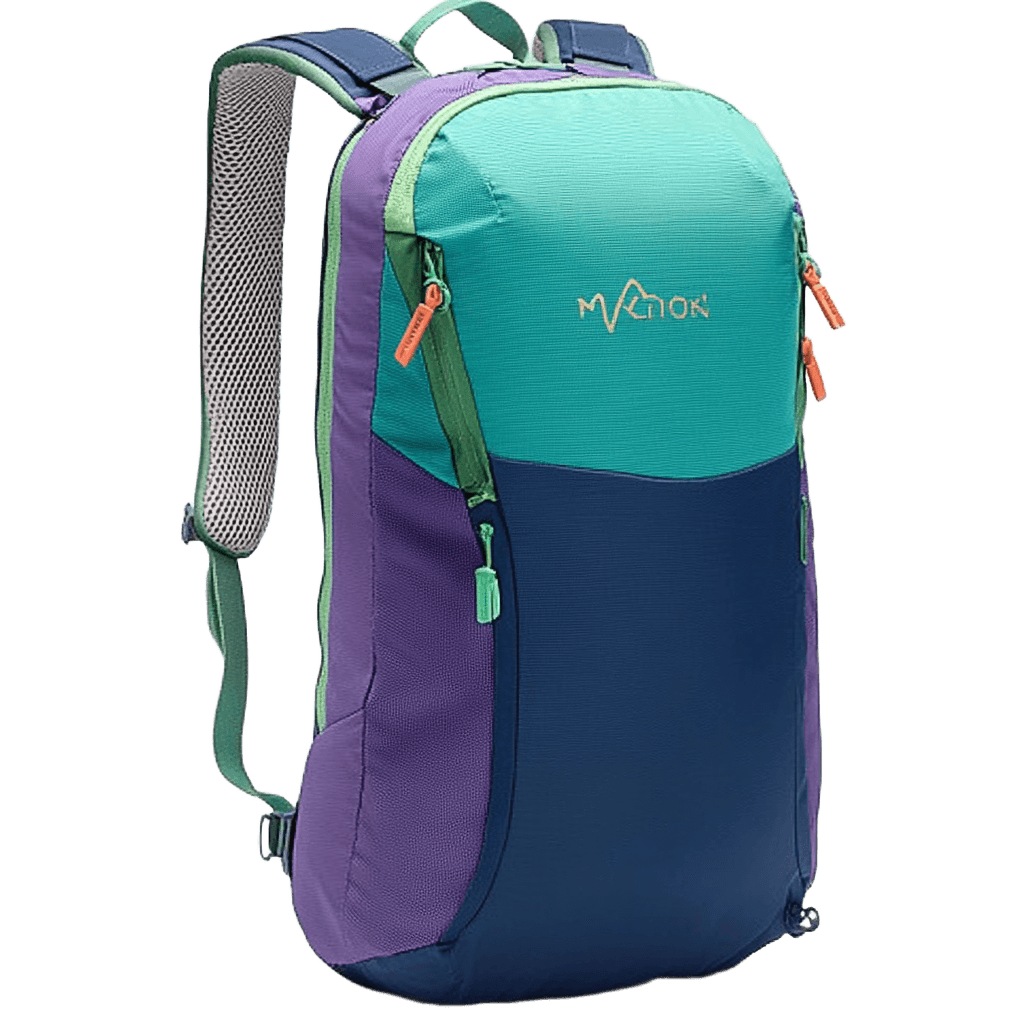
Discover Your Perfect Hiking Backpack
When it comes to outdoor gear, your choice of hiking backpacks matters. Taknice offers a selection of our best-selling backpacks, designed for both durability and functionality. With customizable features for brand visibility and enhanced comfort for outdoor adventures, our hiking backpacks combine style, performance, and rugged reliability.
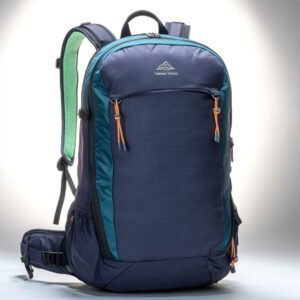
Hiking Backpack 1
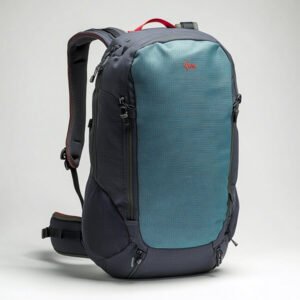
Hiking Backpack 2
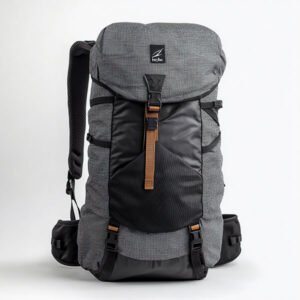
Hiking Backpack 3

Hiking Backpack 4
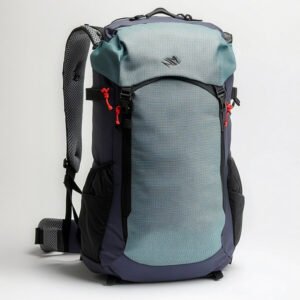
Hiking Backpack 5

Hiking Backpack 6
Customizable Hiking Backpacks for Your Business
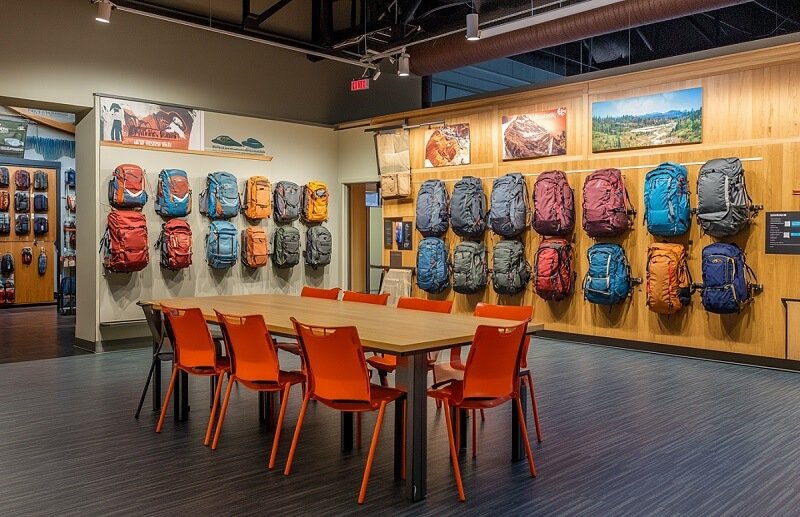
At Taknice, we recognize that every brand has its unique needs. That’s why we offer customizable hiking backpacks designed to reflect your business identity and meet the specific demands of your market. From durable materials to practical features, we ensure that your hiking backpacks are ready to withstand any outdoor adventure while promoting your brand’s values.
Customization Options Include:
Material Selection: Choose from a wide variety of high-quality, weather-resistant fabrics that are perfect for outdoor use and can stand up to the elements.
Color Options: Select from an extensive range of colors to align with your brand’s identity or cater to your target audience’s preferences.
Logo Printing: Personalize the backpacks with your custom logo, creating a professional, branded look that enhances brand recognition.
Feature Modifications: Tailor the design by adding extra compartments, hydration pack sleeves, reinforced straps, or other functional features to improve usability and meet specific customer needs.

Consult
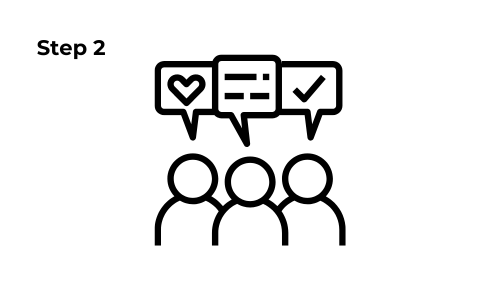
Idea & Design
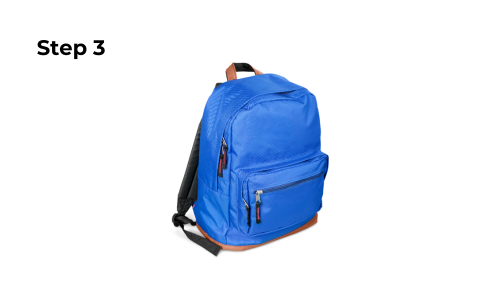
Sample
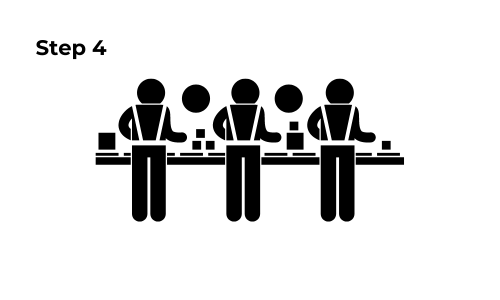
Mass Production
Customizable Hiking Backpacks for Your Business
At Taknice, we understand that every brand has unique needs. That’s why we offer customizable hiking backpacks that reflect your business identity and market demands. With durable materials and practical features, we ensure your backpacks are built for adventure and designed to promote your brand.
Design & Prototyping
Your hiking backpacks start with detailed designs that prioritize durability, comfort, and user convenience. We select the best outdoor-grade materials and create a prototype to fine-tune every feature, ensuring the perfect balance of functionality and aesthetics.
Cutting & Assembly
High-quality fabrics are precisely cut to shape the backpack’s components, including the main body, straps, padding, and compartments. Both manual and automated techniques are used to ensure accuracy and consistency.
Sewing & Construction
The main elements of the backpack are stitched together with reinforced stitching at critical stress points, guaranteeing durability and reliability for tough outdoor conditions.
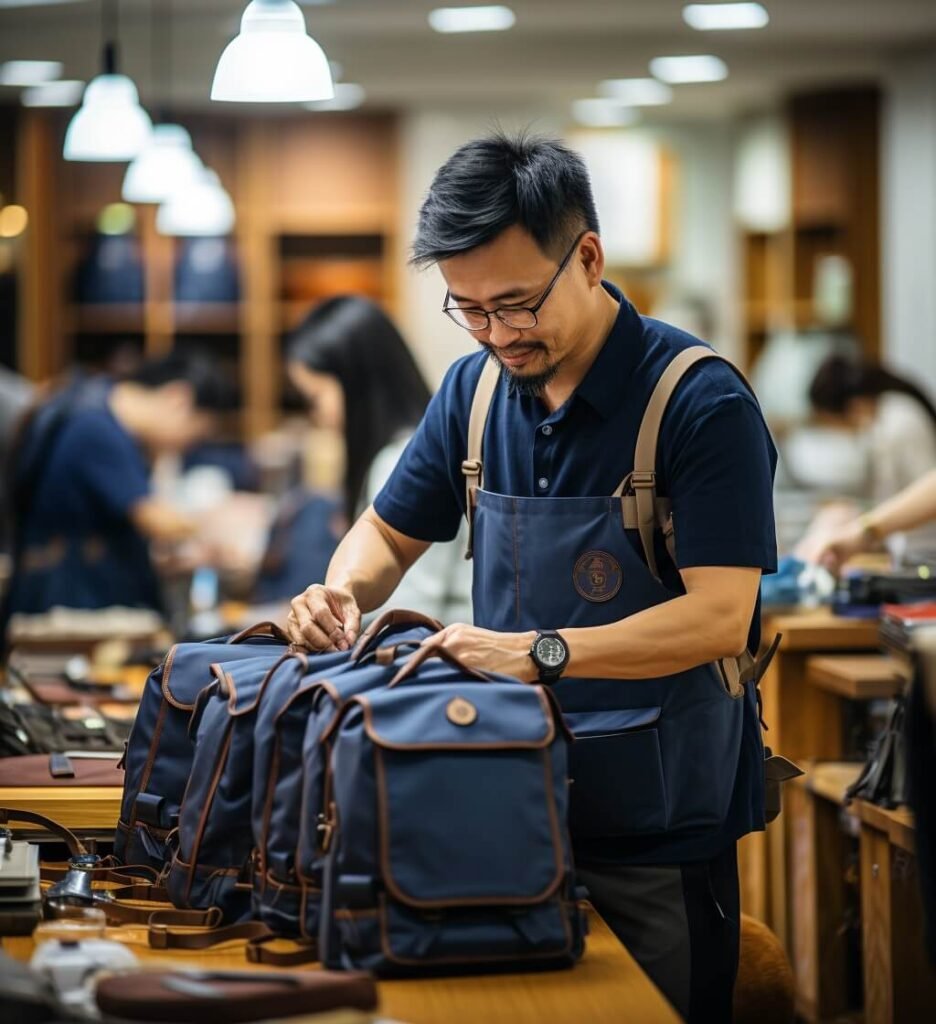
Features Addition
We integrate essential features such as multiple compartments, hydration pack sleeves, adjustable straps, and ventilation systems to boost performance and comfort on your outdoor adventures.
Quality Assurance
Your backpacks undergo rigorous testing for strength, load-bearing capacity, and weather resistance, ensuring they meet the highest standards for durability in demanding conditions.
Packaging & Distribution
Once your backpacks pass all quality checks, they are carefully packed and shipped, ensuring they arrive in perfect condition and are ready for outdoor use.
Why Choose Taknice
Flexible MOQ
We understand that each business has its own specific requirements. That's why we offer flexible minimum order quantities for hiking backpacks, allowing you to adjust orders according to your needs and manage your inventory with ease.
High-End Customization
With Taknice, you can fully customize your hiking backpacks. From durable materials and colors to additional features like compartments, hydration sleeves, and branding, every detail can be tailored to match your brand’s identity and your customers’ needs.
14 Years of Proven Experience
Backed by 14 years of expertise in outdoor gear manufacturing, Taknice guarantees high-quality, reliable hiking backpacks designed to withstand rugged conditions and meet your performance expectations.
Quick Sample Turnaround
We understand how crucial speed is in your business. Our efficient sample production process ensures that your custom hiking backpack samples are completed within 5-7 days, allowing for quick review and approval to keep your projects on track.
Timely Delivery
We prioritize on-time delivery to help you stay on schedule. With Taknice, you can trust that your orders will be shipped on time, ensuring you meet your deadlines and keep your business operations running smoothly.

All You Need To Know About Hiking Backpacks
When it comes to sourcing premium hiking backpacks for your business, Taknice is here to provide you with high-quality, customizable solutions designed to meet the unique demands of outdoor enthusiasts. From rugged durability to advanced functionality, a well-designed hiking backpack is essential for customers who rely on dependable gear for their adventures.
As a leading manufacturer, Taknice understands that selecting the right backpack involves a careful balance of design, materials, and features that enhance both performance and comfort. In this comprehensive guide, we’ll walk you through the key design elements of hiking backpacks, the best materials for durability and comfort, and how to choose a supplier that can meet your brand’s needs.
Table of Contents
01 What are the key design elements of a hiking backpack?

Designing a high-quality hiking backpack requires balancing several important factors to ensure comfort, durability, and functionality. Below are the key design elements to consider:
1. Suspension System
The suspension system is the core of a hiking backpack. A good suspension system helps distribute the load and increases comfort.
- Shoulder Straps & Waist Belt: Shoulder straps should be padded to distribute pressure, while the waist belt helps transfer the load, reducing strain on the shoulders.
- Chest Strap: The chest strap helps stabilize the backpack and prevent excessive movement, ensuring even weight distribution.
- Breathable Back Panel: A breathable back panel helps reduce sweat buildup and improves comfort during use.
2. Capacity & Compartments
Proper capacity and internal organization improve the functionality of the backpack.
- Capacity: Choose an appropriate capacity based on the activity, with typical hiking backpacks ranging from 20L to 80L.
- Compartment Design: Multiple pockets and dedicated compartments help organize and access gear more easily.
3. Durability & Water Resistance
A hiking backpack needs to withstand harsh outdoor conditions, making durability and water resistance critical.
- Material Selection: Use strong, durable, and tear-resistant materials (such as nylon or polyester) to enhance the backpack’s lifespan.
- Waterproof Design: Many backpacks feature waterproof coatings or include rain covers to protect the contents during wet conditions.
4. Comfort
Comfort is one of the most important factors in determining the popularity of a hiking backpack.
- Back Panel Design: The back panel should be breathable to prevent sweat buildup and provide support.
- Adjustability: Adjustable shoulder straps and waist belts allow users to tailor the fit for maximum comfort.
5. Load Distribution
Proper load distribution ensures that weight is evenly spread across the backpack, reducing strain on any one area.
- Load Placement: The placement of heavier items closer to the back helps maintain balance and reduces pressure on the back.
6. Additional Features
In addition to the basic suspension system, additional features can enhance the overall experience of using a hiking backpack.
- Hydration System: Built-in hydration reservoirs and tubing make it easier to carry and drink water on the go.
- External Attachment Points: Attachment points for trekking poles, ice axes, or other tools.
- Reflective Strips & First Aid Kit: Improves visibility in low light conditions and provides emergency supplies.
- Rain Cover: A rain cover helps protect the backpack and its contents from getting wet during rainstorms.
02 What materials are most suitable for hiking backpacks to provide the best durability and comfort?
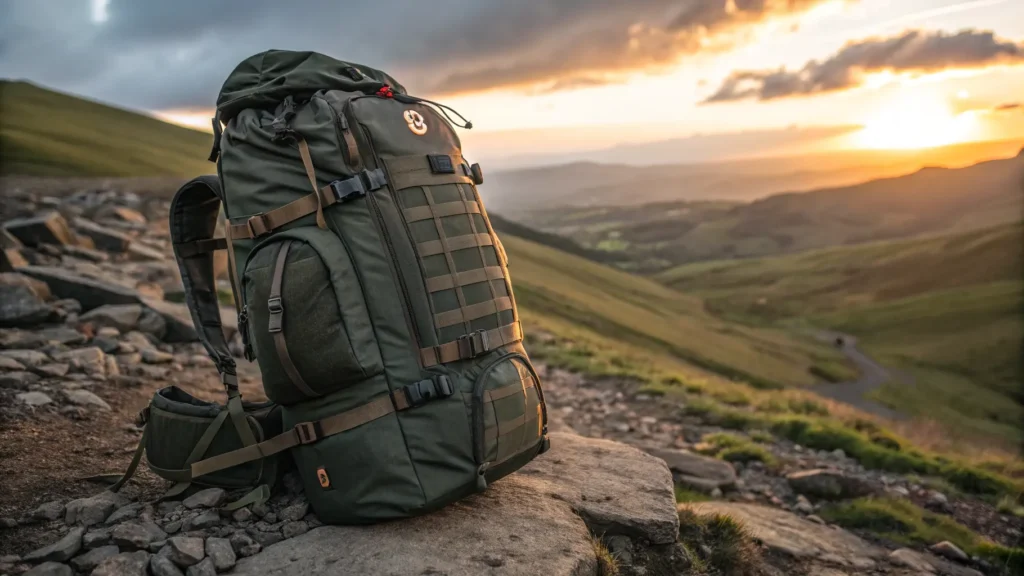
For hiking backpacks, the choice of material directly impacts the durability and comfort of the pack. Hiking requires backpacks that can withstand harsh environments while also providing a comfortable fit for the wearer. Here are some of the best materials for hiking backpacks that offer optimal durability and comfort:
1. Nylon
Nylon is one of the most common materials used for hiking backpacks due to its excellent durability and light weight. High-density nylon (such as 1000D nylon) is highly resistant to tearing and abrasion. Nylon also offers good water resistance, though it is not completely waterproof, it helps prevent moisture from seeping in and protects the items inside the bag.
2. Polyester
Polyester is lighter than nylon, and while its abrasion resistance may be slightly lower, it remains a very durable material that is often used for medium-weight hiking backpacks. The advantage of polyester is its UV resistance, meaning it doesn’t fade easily, and it can withstand most weather conditions, making it suitable for milder hiking environments.
3. CORDURA®
CORDURA® is a high-performance fabric developed by DuPont, known for its extreme durability and tear resistance. It is widely used in outdoor gear, particularly hiking backpacks. Not only is CORDURA® tough and durable, but it also has excellent water resistance and antibacterial properties, making it ideal for backpacks that need to withstand high loads over long periods.
4. Gore-Tex®
For backpacks requiring waterproof functionality, Gore-Tex® is an ideal choice. Gore-Tex® material is both waterproof and breathable, ensuring that your pack’s contents stay dry while maintaining ventilation to prevent moisture buildup inside the bag. Although it’s usually used in external layers, some high-end backpacks incorporate Gore-Tex® to enhance their water resistance.
5. Dyneema® (High Strength Polyethylene)
Dyneema® is one of the strongest fibers in the world and is commonly used in ultralight hiking backpacks. It offers incredibly high tensile strength and excellent abrasion resistance. Although this material is more expensive, its main advantage is the ability to provide outstanding strength and durability while keeping the backpack light.
6. Foam Back Panel
Beyond external materials, the design of the backpack’s back panel is also crucial. Foam back panels provide comfort during wear by reducing pressure on the back over long periods. Many backpacks are designed with air channels on the back panel to enhance ventilation, helping prevent discomfort caused by sweating.
7. Mesh Fabric
Mesh is commonly used for shoulder straps and back panels of hiking backpacks. Mesh offers good breathability and comfort, allowing air circulation, which reduces discomfort in hot environments. This design is particularly helpful for long hikes, improving the overall comfort of the backpack.
03 How to balance lightweight design and durability?
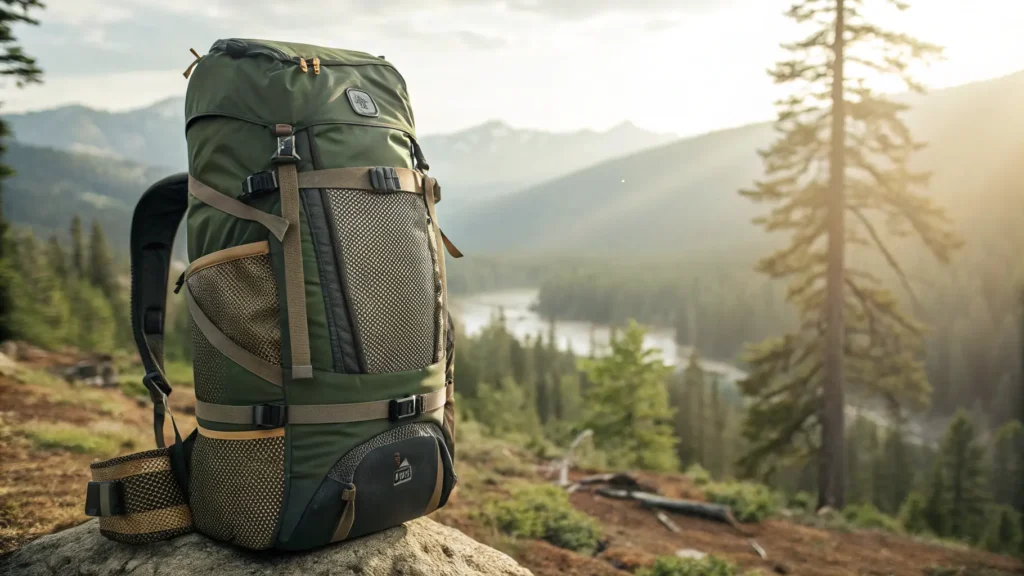
In the design of hiking backpacks, balancing lightweight and durability is a crucial issue. Hiking often requires carrying a significant amount of gear, so the backpack needs to be light enough to reduce the load, while also durable enough to withstand harsh outdoor conditions. So, how do we find the best balance between these two factors? Here are several key considerations and strategies:
1. Choose High-Strength Lightweight Materials
The most direct way to balance lightweight and durability is by choosing high-strength, lightweight materials. For example, Dyneema®, an ultra-high molecular weight polyethylene (UHMWPE) fiber, is one of the strongest fibers available. It is extremely light yet highly abrasion-resistant, making it ideal for ultra-light hiking backpacks. Similarly, CORDURA® nylon provides some degree of lightweight without sacrificing durability, especially in areas of the backpack that bear heavier loads.
2. Design a Rational Backpack Structure
The design structure of the backpack plays a critical role in balancing lightweight and durability. By using layered designs and reinforcing key areas, the weight can be reduced while enhancing durability. For example, the bottom and shoulder straps of the backpack can use thicker, more durable materials, while lighter materials can be used in other areas. Local reinforcements ensure that high-stress areas of the backpack remain durable despite the overall lightweight design.
3. Optimize Internal and External Accessories
Minimizing unnecessary external accessories and internal components can significantly reduce the overall weight of the backpack. For instance, using a lightweight aluminum frame instead of a traditional steel frame, or opting for simple zippers and buckles, can decrease the backpack’s weight while still maintaining adequate structural stability and durability.
4. Adopt Multi-Functional Designs
Designing multi-functional backpacks is another approach to balance lightweight and durability. By incorporating detachable or adjustable modular features, hikers can choose to reduce the backpack’s weight based on their needs. For example, certain accessories can be left behind, or a removable base can be used. This allows the backpack to be lightened when necessary but still offer sufficient functionality when required.
5. Choose an Appropriate Carrying System
The carrying system directly impacts the comfort and durability of the backpack. By adopting appropriate air channel designs and breathable back panels, the backpack can maintain its lightness while improving comfort. Modern hiking backpacks often use breathable foam back panels, which can enhance comfort and durability without adding significant weight.
6. Material Durability and Protective Layers
For external materials, using specially treated lightweight fabrics, such as water-resistant nylon coatings, can improve the backpack’s water resistance and weatherproofing while maintaining its light weight. Additionally, reinforced stitching and abrasion-resistant designs are effective ways to enhance durability. While these features may slightly increase the weight, they are crucial in maintaining the overall durability of the backpack.
7. Balancing Weight and Comfort
Lightweight design doesn’t mean sacrificing comfort. Selecting appropriate straps and waist belts to distribute the load is part of balancing lightweight and durability. Using ergonomically designed shoulder straps and waist belts can effectively reduce pressure points and improve the comfort of the backpack. Though these designs might add a small amount of weight, the overall user experience will be much better.
8. Customization Options
If you have specific needs, manufacturers like Taknice can provide customized backpack design services. We can help you find the optimal balance between lightweight and durability based on your brand’s requirements, and tailor backpacks to meet market demand.
04 What are the different needs of consumers (e.g., beginners, intermediate, and professional hikers) when it comes to backpacks?

Different types of consumers have varying needs when it comes to hiking backpacks, which are mainly influenced by their experience level, load-carrying requirements, comfort preferences, and the importance they place on specialized functions. Based on different consumer levels, the design and features of the backpacks also differ. Below is an analysis of the demand differences for beginner hikers, intermediate hikers, and professional mountaineers:
1. Beginner Hikers
Beginner hikers are typically new to outdoor activities, so their needs are relatively simple. They prioritize value for money and basic functionality.
Key Requirements:
- Lightweight: Beginner hikers value a lightweight backpack to reduce the load, especially for short hikes.
- Comfort: They need basic comfort, but don’t require complex carrying systems. Simple back panels and shoulder straps are sufficient.
- Basic Features: Beginner hikers usually don’t require many specialized functions. A straightforward design with adequate storage space and basic water resistance is enough.
- Price Sensitivity: Beginners tend to be more price-sensitive, preferring backpacks that offer good value without a high price tag.
Suggested Design:
- Material: Use lightweight yet durable materials such as nylon or polyester that ensure long-lasting use without adding extra weight.
- Carrying System: Simple shoulder straps and waist belts, combined with breathable back panels, perfect for short trips.
- Functionality: Sufficient storage space with basic features like water bottle pockets, zipper compartments, and simple attachment systems.
2. Intermediate Hikers
Intermediate hikers have gained more outdoor experience and now have higher expectations for their gear. They focus on backpack comfort, functionality, and durability, as they may engage in longer and more demanding hikes.
Key Requirements:
- Comfort: Intermediate hikers pay more attention to carrying systems and comfort, especially during long hikes. They need shoulder straps and waist belts that offer good weight distribution and support.
- Durability and Functionality: They require a more durable backpack, with additional functional designs, such as multiple compartments, enhanced water resistance, and better ventilation.
- Versatility and Adaptability: Intermediate hikers may participate in various outdoor activities, so the backpack should have flexible features, like adjustable compartments or detachable parts.
Suggested Design:
- Material: Use more durable fabrics such as CORDURA® nylon or high-density polyester, ensuring the backpack remains robust over time and in different environments.
- Carrying System: Include a professional carrying system with better ventilation back panels, reinforced waist belts, and adjustable shoulder straps for comfort.
- Functionality: Add more storage compartments, organized pockets, and external attachment systems, designed to meet the needs of long-distance hiking and varying conditions.
3. Professional Mountaineers
Professional mountaineers engage in extreme or long-term hiking activities, so they have the highest demands when it comes to backpacks. Their needs are focused on high performance, maximum comfort, and durability, with specialized features tailored to specific climbing conditions.
Key Requirements:
- Extreme Durability: Professional mountaineers need backpacks that can withstand harsh conditions and prolonged use, including in extreme weather (e.g., snow, ice, high altitudes).
- Comfort and Load Management: They require excellent load distribution and support due to long, heavy loads. Comfort is a priority for long-duration wear.
- Specialized Features: They need backpacks with advanced features such as extremely high water resistance, specific compartments for emergency gear, and attachment systems for technical climbing equipment.
- Customization: Some professional mountaineers may need fully customized backpacks to suit specific mountaineering tasks or personal preferences.
Suggested Design:
- Material: Use high-performance materials such as Dyneema® or Gore-Tex® for superior durability, tear resistance, and waterproofing.
- Carrying System: Incorporate advanced carrying systems with active airflow designs, adjustable load distribution, thick shoulder straps and waist belts, and customizable back panels to handle high loads over extended periods.
- Functionality: Include features such as ice axe loops, external gear attachment systems, reinforced weatherproofing, and specific compartments for emergency supplies or climbing tools.
Summary:
- Beginner Hikers: Focus on lightweight, comfort, and affordability, with simple features suitable for short hikes.
- Intermediate Hikers: Need more comfort, durability, and functionality for longer hikes and varied outdoor activities.
- Professional Mountaineers: Require extreme durability, specialized features, and maximum comfort for high-intensity and extreme conditions.
05 How to choose the right hiking backpack supplier?
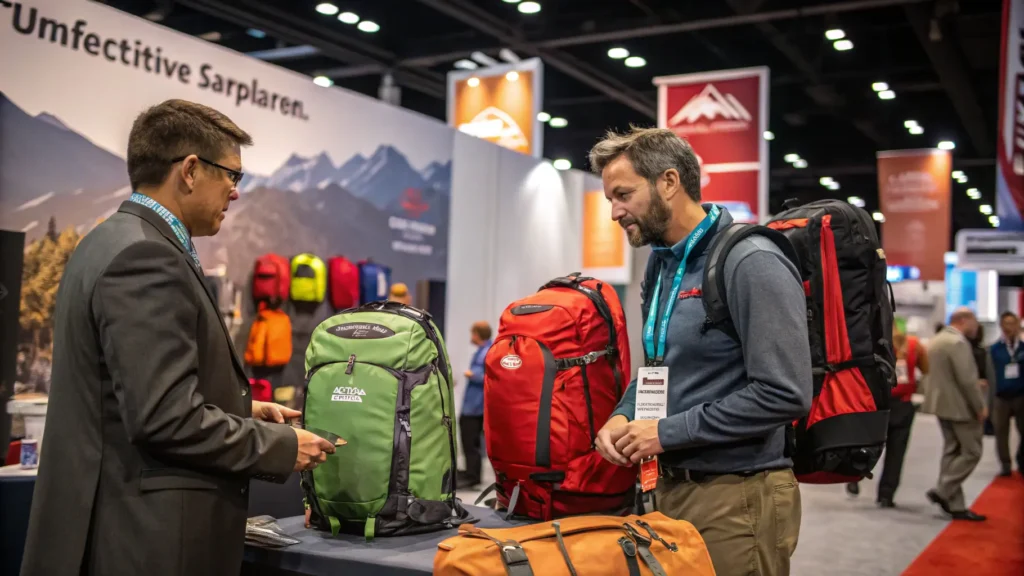
Choosing the right hiking backpack supplier is crucial for ensuring product quality, timely delivery, and successful long-term collaboration. When selecting a supplier, multiple aspects must be evaluated, including the supplier’s capabilities, experience, quality control systems, and more. Here are some key points to help you choose the right supplier:
1. Supplier’s Capabilities and Production Capacity
Choosing a supplier with strong production capacity and equipment is essential, especially when dealing with large-scale custom orders. You need to confirm whether the supplier can meet your production needs and deliver on time.
- Production Facilities: Check if the supplier has modern production equipment capable of handling large-scale production or custom orders. The number of production lines and the up-to-date nature of the equipment directly impact delivery schedules and production efficiency.
- Delivery Ability: Understand the supplier’s ability to deliver on time, especially during peak demand periods (such as holiday seasons or specific outdoor activity seasons). The supplier’s production planning, warehousing capabilities, and logistics management are important indicators of their delivery capability.
- Customization Ability: If you require custom backpacks, ensure the supplier has the ability to design and manufacture custom products, including adjustments to the size, color, functionality, and accessories of the backpacks.
2. Supplier’s Experience and Market Reputation
The experience and reputation of the supplier provide important quality guarantees and service commitments.
- Industry Experience: Choose a supplier with years of experience in the outdoor backpack manufacturing industry. Their understanding of different materials, design requirements, and market needs will help you design products that meet consumer demands.
- Customer Feedback and Reputation: Review customer feedback, successful cases, and the supplier’s reputation in the industry. By attending trade shows or visiting other clients of the supplier, you can gain insight into the quality and after-sales service they provide.
- Cross-border Cooperation Experience: If your market is in North America, Europe, or other regions, consider whether the supplier has relevant cross-border cooperation experience. Understand how they handle different market demands, cultural differences, and their international logistics capabilities.
3. Quality Control System
Quality control is key to ensuring the products meet standards and customer expectations. A supplier with a strict quality management system can provide stable product quality and good after-sales service.
- Quality Certifications: Confirm whether the supplier has BSCI or other relevant quality certifications. These certifications indicate that the supplier has a standardized quality management system.
- Quality Inspection Processes: Understand if the supplier has strict quality control measures during production, such as raw material inspections before production, quality monitoring during production, and finished product inspections after production.
- Sampling and Testing: Confirm whether the supplier has comprehensive testing and inspection processes, particularly for aspects such as backpack durability, waterproofing, and load-bearing capacity. Ensure every batch of products passes strict quality control.
- Samples and Sample Approval: When selecting a supplier, request samples to evaluate their production capabilities and product quality. If the product does not meet your expectations, you can adjust it in a timely manner.
4. R&D and Innovation Capabilities
The supplier’s R&D and innovation spirit are crucial for helping you improve product competitiveness and meet market demands.
- R&D Team: Learn whether the supplier has a dedicated R&D team that can innovate or improve products according to your needs. A supplier with R&D capabilities can help you develop new backpack styles or optimize existing designs.
- Design and Functional Innovation: Check if the supplier can provide innovative designs that meet market trends. For example, whether they have the ability to design different types of backpacks based on different functions (such as multi-day hiking, professional mountaineering, etc.).
- Ability to Adapt to Market Changes: Determine whether the supplier can flexibly respond to market changes and demands, such as quickly adjusting designs, material choices, etc., to meet new consumer needs or market shifts.
5. Customer Service and Communication Efficiency
The quality of customer service and communication efficiency with the supplier plays a significant role in the smooth procurement process.
- Communication and Responsiveness: The supplier’s responsiveness and communication efficiency directly impact the smoothness of the procurement process. Ensure the supplier can respond to your inquiries, quotations, and order-related questions in a timely manner.
- After-Sales Service: Understand whether the supplier offers comprehensive after-sales services, including handling product quality issues, tracking logistics, and return/exchange policies. Good after-sales service can help you better handle customer feedback and complaints.
- Language and Cultural Adaptability: If the supplier is from a different cultural or language background, ensure they can communicate smoothly with you and understand your needs. Good cross-cultural communication skills can help avoid misunderstandings and promote smoother cooperation.
6. Pricing and Payment Terms
While price is an important consideration, it’s more important that the price aligns with the quality and service provided by the supplier.
- Competitive Pricing: Ensure the supplier’s pricing is competitive in the market while ensuring product quality and delivery timelines.
- Flexible Payment Terms: Negotiate flexible payment terms with the supplier to ensure reasonable payment methods and good security for payments before and after orders.
7. Sustainability and Environmental Responsibility
Modern consumers and businesses are increasingly concerned with sustainability and environmental issues. Choosing a supplier that meets environmental standards is a wise decision.
- Environmental Certifications: Choose suppliers with environmental certifications who use sustainable materials and meet eco-friendly standards, such as using eco-friendly dyes, recyclable materials, etc.
- Social Responsibility: Ensure the supplier has good social responsibility, complies with labor laws, respects employee rights, and adheres to international labor organization standards during production.
06 How to evaluate the quality and durability of a hiking backpack?
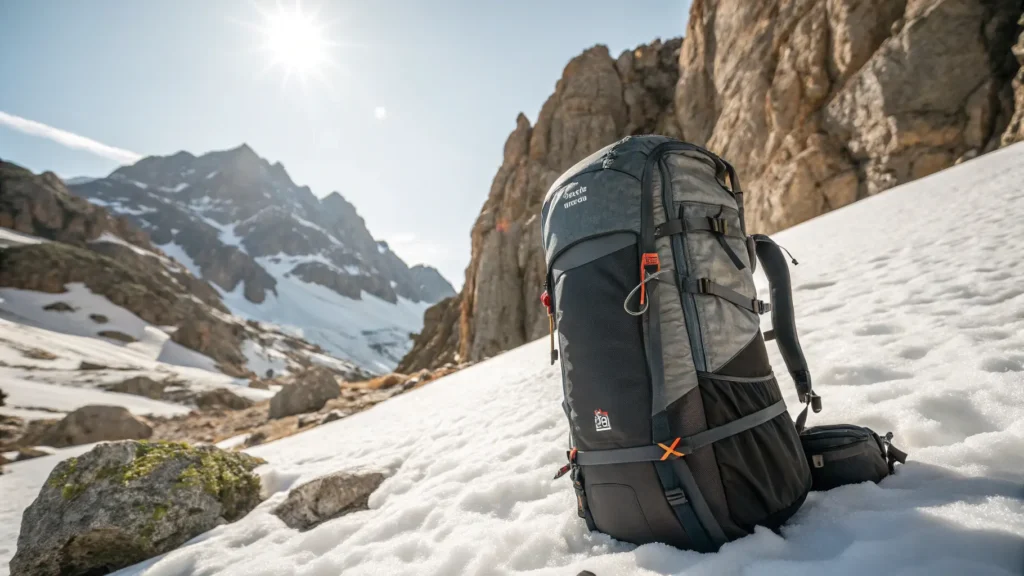
When selecting and purchasing a hiking backpack, evaluating its quality and durability is crucial, as the performance of the backpack directly affects your outdoor experience. Whether it’s for short hikes or extended multi-day adventures, a backpack needs to withstand various environmental challenges. So, how can you assess the quality and durability of a hiking backpack? Below are key factors and evaluation methods:
1. Material Selection
The material of the backpack is the primary factor in determining its durability and quality. High-quality materials ensure the backpack can withstand long-term use and perform well in harsh environments.
- Outer Fabric: Typically, hiking backpacks require materials that are waterproof, tear-resistant, and abrasion-resistant. Common durable materials include CORDURA® nylon and Dyneema® fibers, which offer excellent tear resistance and wear resistance, making them ideal for challenging outdoor environments.
- Lining Material: The lining material is also important, especially when the backpack is used to store electronics or needs to keep contents dry. Waterproof materials like TPU coating or waterproof nylon provide excellent protection.
- Zippers and Hardware: High-quality zippers and hardware are essential for ensuring durability. Check the smoothness and strength of zippers, especially at critical points such as the main compartment and side pockets.
2. Sewing Craftsmanship
The stitching craftsmanship of the backpack directly impacts its durability and stability. The quality of the stitches, stitch density, and seam treatments can significantly influence the backpack’s lifespan.
- Double Stitching and Reinforced Design: The main seams of the backpack, especially the shoulder straps, bottom, and load-bearing areas, should be reinforced with double stitching. These parts bear the most pressure, requiring additional reinforcement.
- Dense Stitching: Check the stitching density of the backpack. High stitch density can improve the backpack’s tensile strength and prevent threads from loosening.
- Reinforced Areas: Some backpacks use extra layers of fabric or reinforced stitching at high-wear areas, such as the bottom and shoulder strap seams, which significantly enhance the durability.
3. Load Distribution and Suspension System
The suspension system of a hiking backpack not only affects comfort but also directly influences durability. A suitable suspension system helps reduce pressure on the shoulders and waist, ensuring stability under prolonged heavy loads.
- Back Panel and Shoulder Straps: Check the design of the back panel to ensure it has an ergonomic structure that can effectively distribute weight. Many high-end backpacks use breathable foam panels to enhance comfort while allowing air circulation to reduce sweat buildup.
- Waist Belt Design: A sturdy waist belt helps transfer part of the weight to the hips, relieving pressure on the shoulders. The waist belt should be wide and well-padded to improve comfort and load-bearing capacity.
- Load-Bearing Test: Conduct a manual test to assess the weight-bearing capacity of the backpack, ensuring the shoulder straps and waist belt can support a heavy load, even after prolonged use.
4. Zippers and Opening Design
Zippers and openings are commonly used parts of a backpack, and their design determines the practicality and long-term durability of the product. High-quality zippers and opening designs can effectively reduce damage and snagging.
- Waterproof Zippers: Many high-quality hiking backpacks come with waterproof zippers or zipper flaps to protect the contents from rain.
- Reinforced Zipper Design: Check if the zippers and openings are reinforced to prevent them from getting torn or stuck.
- Smoothness of Opening: Test if the zippers open smoothly without catching or sticking.
5. Waterproof Performance
In outdoor environments, waterproofing is an essential factor in determining whether a hiking backpack is up to standard. A high-quality backpack should prevent water from penetrating, keeping the contents dry.
- Waterproof Coatings: Most hiking backpacks have an additional waterproof coating, such as TPU coating, on the outer layer to enhance waterproofing.
- Waterproof Bags or Pockets: Some backpacks come with additional waterproof bags or internal compartments to store electronics, clothes, or other items that need to stay dry.
- Waterproof Testing: Some brands conduct waterproof testing, simulating heavy rain conditions to see how the backpack performs. You can refer to these results to ensure that the backpack provides sufficient protection against water.
6. Adaptability to Different Environments
The design of the backpack should be suitable for different outdoor conditions. Different hiking activities (such as high-altitude trekking, backpack camping, or extreme expeditions) require different backpack designs.
- Temperature Adaptability: Some hiking backpacks are designed to withstand extreme temperatures and maintain their elasticity and strength in harsh weather conditions.
- Environmental Adaptability: Certain backpacks are specially designed for specific environments, such as snow, desert, etc., requiring features like UV resistance, sand protection, and snowproof materials. The backpack’s material and design will be optimized for these environmental needs.
7. Practical Use Evaluation
The most direct and effective way to evaluate a backpack’s quality and durability is by using it in real-life situations. You can assess the backpack through the following methods:
- Backpack Use Test: Use the backpack for extended hiking trips to test its comfort, load-bearing capacity, abrasion resistance, and durability.
- User Reviews and Recommendations: Check reviews and recommendations from other consumers, particularly those with outdoor experience. Feedback from real users can provide valuable insights into the true performance of the backpack.
07 What is the quality control process for hiking backpacks?
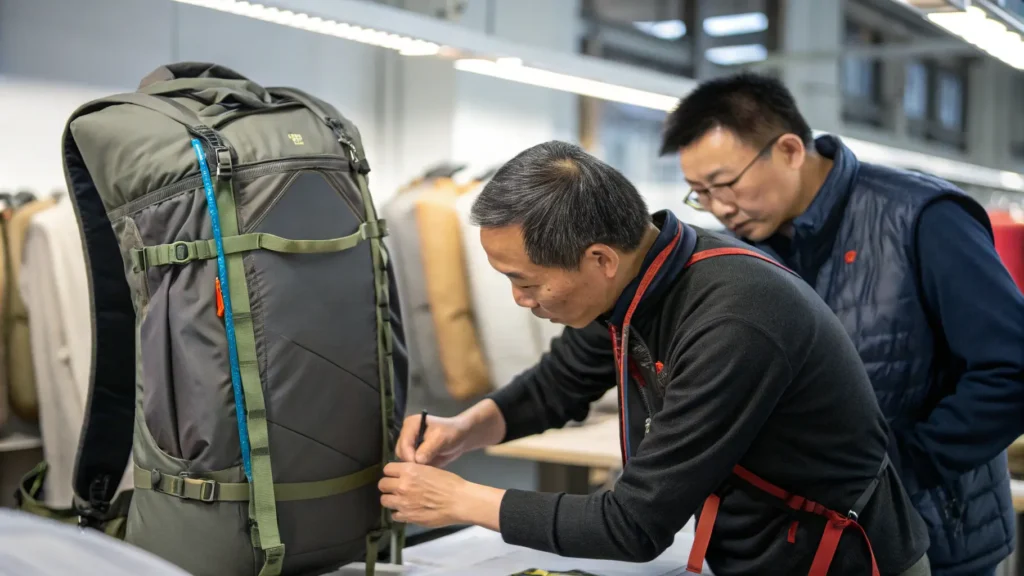
Ensuring the quality of a hiking backpack involves a systematic quality control process that spans from the initial design stage to the final production and shipment. The process ensures that the backpack meets the required standards of durability, functionality, and safety. Below is a detailed breakdown of the quality control process for hiking backpacks:
1. Design and Material Selection
The first step in the quality control process is selecting the right design and materials that meet durability, comfort, and functionality standards.
- Material Evaluation: Materials such as CORDURA® nylon, Dyneema® fabric, and waterproof coatings need to be tested for their durability, tear resistance, and waterproof qualities. The supplier or manufacturer should verify that these materials meet the required performance standards (e.g., ASTM, ISO certifications).
- Design Validation: The backpack’s design, including stitching patterns, strap placements, zippers, and load distribution, is reviewed. A prototype is often developed and tested to ensure that all features function as intended.
2. Prototype Development
Before mass production begins, a prototype of the hiking backpack is created based on the final design. The prototype undergoes a series of tests to verify its quality.
- Functionality Testing: The prototype is subjected to real-world usage simulations to ensure that it meets the necessary functional requirements, such as load-bearing capacity, comfort, and usability. The testing includes hiking under different environmental conditions to assess performance.
- Sample Inspection: Inspectors check the stitching, zippers, and hardware on the prototype for any potential weaknesses or areas that could cause premature wear.
3. Production Monitoring
Once the prototype is approved, the mass production process begins. During production, various checkpoints are established to maintain consistent quality.
- Material Inspection: Every batch of materials (fabric, zippers, straps, etc.) is inspected for defects. The supplier must ensure that the materials meet quality standards and specifications.
- Production Line Supervision: Quality inspectors monitor the production process to ensure that each step follows the prescribed methods. This includes checking for consistency in stitching, alignment of straps, correct use of reinforced stitching in high-stress areas, and the proper assembly of components.
- In-line Testing: As backpacks are being manufactured, in-line tests are conducted on individual components such as straps, zippers, and buckles. For example, the zippers are tested for smoothness and durability, and the stitching is tested for strength.
4. Final Quality Inspection
Once the hiking backpacks are completed, a final quality inspection is conducted before they are packaged and shipped.
- Visual Inspection: Each backpack is visually inspected for any cosmetic defects, such as loose threads, uneven stitching, or discoloration.
- Functional Testing: Functional tests are conducted to check the performance of all key components. This includes verifying the waterproof performance, ensuring zippers and buckles work properly, and confirming that the backpack meets its design specifications.
- Stress and Load Testing: The backpack is loaded with weight to simulate real-world use. Inspectors check how the backpack performs under stress, including testing the straps and stitching for strength.
- Waterproof Testing: If the backpack is marketed as waterproof, it is subjected to a waterproof test, usually by submerging or spraying water to verify that water does not leak through seams or zippers.
- Fit and Comfort Testing: The fit and comfort of the straps, waist belts, and back panel are also assessed, ensuring that the backpack is ergonomic and easy to wear for long periods.
5. Packaging and Labeling
Once the final quality inspection is complete, the backpacks are prepared for shipment.
- Packaging Inspection: Backpacks are carefully packed to prevent damage during transit. This includes ensuring that no sharp edges or components are exposed that could damage the backpack or other items in the shipment.
- Labeling: Proper labeling is essential for product identification, customer information, and compliance with regulatory standards. Labels should clearly list product information, including the materials used, care instructions, and certifications (e.g., BSCI, ISO 9001).
6. Shipment and Post-Production Monitoring
After the products are packaged and ready for shipment, the manufacturer ensures that they meet the customer’s specifications.
- Final Shipment Check: A final inspection ensures that all backpacks conform to the order specifications before they leave the factory.
- Feedback and Continuous Improvement: After the shipment, manufacturers gather feedback from customers regarding the performance and durability of the backpacks. This feedback is used to make improvements for future production cycles.
08 Conclusion
Whether you’re catering to beginner hikers, seasoned adventurers, or professional mountaineers, the right hiking backpack can significantly elevate your brand’s reputation. By partnering with Taknice, you can access top-tier products designed with the latest materials, innovative features, and optimal comfort, ensuring your customers get the best gear for their outdoor pursuits. Our expertise in crafting customized backpacks tailored to your specific requirements guarantees that your brand will always be ahead of the competition.
Contact Taknice today to explore how we can help you enhance your product offerings with high-performance hiking backpacks that meet your business goals and customer expectations. Let’s start creating the perfect outdoor gear for your brand.
Let’s Get Started With Your Amazing Designs
One-Stop Solutions to rapidly turn your designs into reality

